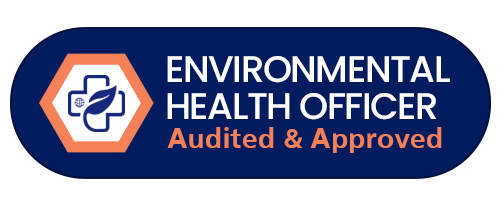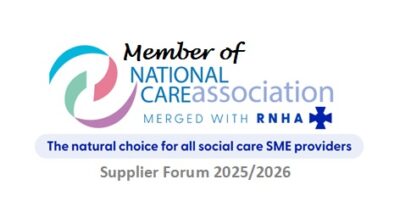What is Infection Control and Prevention?

Now more than ever before, we all need to be doing our bit to prevent the spread of infections. Since COVID-19 began, we have all become more aware of how quickly infections can spread, and those in the care sectors need to take extra precautions to ensure vulnerable people are safe.
Firstly, What is Infection Control and Prevention?
Infection control and prevention is the process of protecting people from harmful pathogens and diseases. It includes essential medical practices and careful hygiene handling.
The Chain of Infection
To control infections, you need to understand and break the chain of infection:
Pathogen – a disease-causing microorganism or germ
Reservoir – an environment where microorganisms or germs reproduce e.g. food
Portal of Exit – how the pathogen leaves the reservoir e.g. coughing
Transmission – how the pathogen moves from one host to another e.g. touching a contaminated object
Portal of Entry – how the pathogen enters a new person e.g. inhalation
Susceptible Host – a person who is vulnerable to infection
Breaking the Chain
Breaking the infection chain means tackling each link. Here are simple ways to do that:
| Chain Link | Effective Solution |
|---|---|
| Pathogen | Complete a course of antibiotics to reduce the risk of bacterial resistance. |
| Reservoir |
Regularly clean and disinfect potential reservoirs to kill pathogens and prevent them from multiplying. Maintain safe distances from others to prevent pathogens from spreading. |
| Portal of Exit | Cover your mouth and nose when coughing or sneezing, and use dedicated toilet facilities and vomit bowls to reduce the spread of gastrointestinal conditions. |
| Transmission | Maintain proper hand hygiene to kill pathogens, then ventilate the room to dilute the concentration of respiratory viruses and bacteria. |
| Portal of Entry | If you are regularly in contact with contagious people, wear fluid-repellent surgical masks and protective eyewear. |
| Susceptible Host | Vaccines prepare the body to fight viral infections. |
Performing an Infection Risk Assessment
You should evaluate how likely someone is to catch an infection and prepare accordingly. Assess the following factors:
Symptoms
-
- Do they have a fever or temperature?
-
- Do they have an unexplained rash?
-
- Do they have any respiratory symptoms like coughing or sneezing?
-
- Do they currently suffer from vomiting or diarrhoea?
Contact
-
- Have they previously been infected by a well-known resistant pathogen?
-
- Have they recently travelled to a country with a high infection risk?
-
- Have they been in contact with infected people?
Person Risk Factors
-
- What is their vaccination status?
-
- Do they have any wounds or breaks in the skin?
-
- Do they have any invasive medical devices like pacemakers?
-
- Do they have underlying conditions or take medications that thin their blood or weaken their immune system?
Reducing the Risks of Infection
The NHS recommends a hierarchy of steps to reduce the risk of infection, starting with the most effective.
Reducing the Hazard
Take public health measures to prevent infection, including administering vaccines, testing for illnesses and isolating infected and vulnerable people.
Changing What We Do
Reducing hazardous events like visits and communal activities can dramatically decrease the risk of infection. You can also include additional cleaning practices in your schedule.
Changing Where We Work
When you cannot change what you do, you can adapt to your environment. Open windows and use air conditioning to improve ventilation, ensure your water systems meet guidelines and spread furniture to avoid contact.
Changing How We Work
You may also need to adapt your practices to reduce the hazards they present. You can limit the number of people in one space or the amount of travel between different locations. Perform risk assessments for every process and train the involved individuals to keep them safe.
PPE
Personal Protective Equipment (PPE) is the last resort, as the other measures should have reduced the risks sufficiently. Use it correctly, especially when removing and disposing of it.
Basic Infection Control Measures
You can practice some simple measures to prevent the spread of infections.
-
- Hand hygiene
-
- Coughing and sneezing etiquette and hygiene
-
- Safe management of equipment
-
- Disinfecting your environment
-
- Managing blood and bodily fluids
-
- Managing laundry
-
- Waste management
-
- Managing contact and exposure
Learn How to Control Infections Today
If you want to help your staff and carers keep those you protect safe, online training is essential. At Caredemy, we offer a range of infection prevention and control courses that include:
Our courses give you a downloadable workbook, access to instant online training and a course certificate upon completion. Whatever level you’re currently at, we have the ideal training course to give you the necessary knowledge and skills to move forward.
Browse our range of infection prevention and control courses.
FAQ
What does infection control and prevention mean?
Infection control and prevention means protecting people from the spread of harmful infections and pathogens. It involves safe medical and hygiene practices.
What is the NHS advice on infection prevention and control?
The NHS states that infection prevention and control are essential responsibilities for all staff. They must practice safe hand hygiene and clean their working environments appropriately.
What are the core infection control principles?
The essential principles of infection control include:
-
- Hand hygiene
-
- Coughing/sneezing etiquette
-
- Safe handling and disposal of sharps
-
- Appropriate handling and disposal of biological and chemical waste
-
- Creating a sterile environment
-
- Managing blood and bodily fluids
What are the most common examples of infection control?
Infection control includes providing appropriate protective equipment, disinfecting working environments, avoiding contact with contaminated people or areas, and safely handling and disposing of sharps like needles.








